Magnet is an object that generates a magnetic field.
Magnets are made of iron, cobalt, nickel and other atoms, which have special internal structures and magnetic moments.
A magnet produces a magnetic field and has the property of attracting ferromagnetic substances such as iron, nickel, cobalt and other metals.
Magnet type: shape magnet: square shaped magnets, magnet, tile shaped magnets, cylindrical magnet, ring magnets, wafer magnets, magnet bar magnets, magnetic frame, magnet: attribute class samarium cobalt magnet, ndfeb magnets, powerful magnets, ferrite magnets, magnet, alnico magnets, iron chromium cobalt industry class magnet: magnet magnetic components, motor, plastic rubber magnets, magnetic, and so on.
Magnets are divided into permanent magnets and soft magnets. Permanent magnets are coupled with strong magnets, so that the spin of magnetic materials and the angular momentum of electrons are arranged in a fixed direction, while soft magnets are coupled with electricity.
The soft iron will slowly lose its magnetism when the current is removed. The midpoint of a bar magnet is suspended by a thin line. When at rest, its two ends point to the north and south of the earth. If the earth is thought of as a large magnet, the earth's magnetic north is the South Pole and its magnetic South is the North Pole.
Between magnets, the magnetic poles of the same name repel each other and the magnetic poles of different names attract each other. So the compass and the South Pole repel, the North Pole repel, and the compass and the North Pole attract.
Classification: Magnets can be classified as "permanent magnets" and "non-permanent magnets".
Permanent magnets can be natural products, also known as natural lodestones, or manufactured by man.
Nonpermanent magnets, such as electromagnets, appear magnetic only under certain conditions.
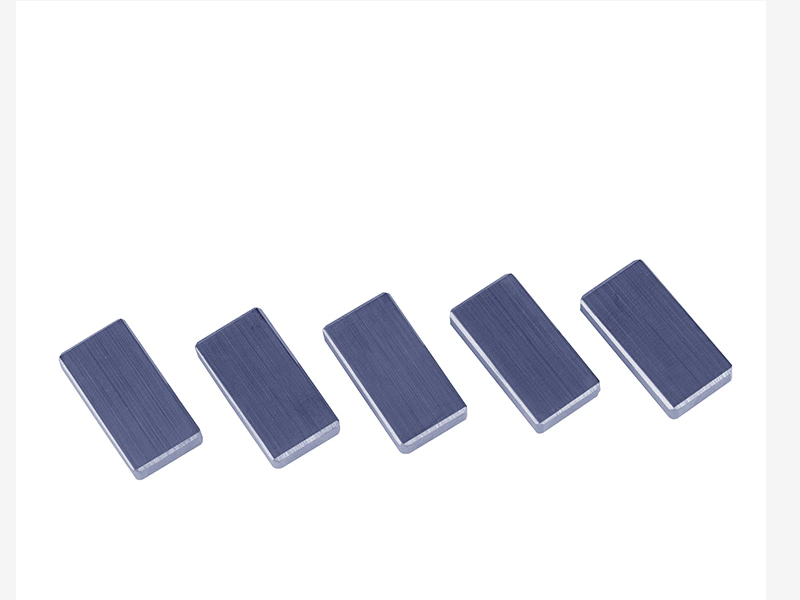
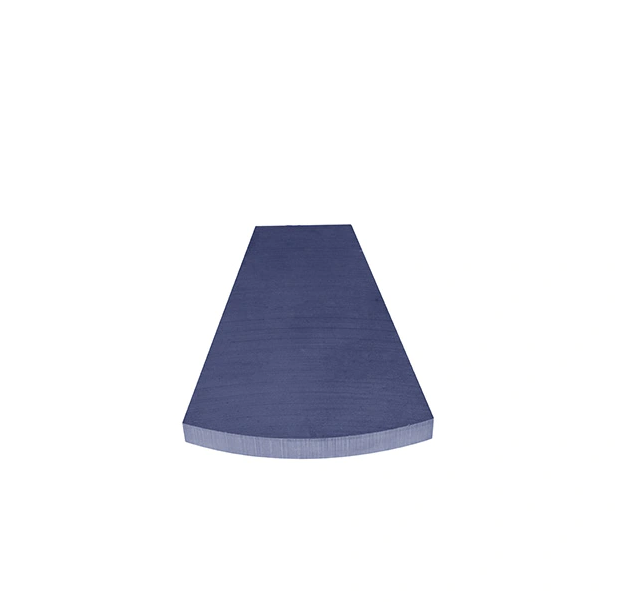 The magnet was not invented by man; it is a natural magnetite.
The magnet was not invented by man; it is a natural magnetite.History of magnet
The ancient Greeks and Chinese discovered a naturally magnetized rock in natur", calling it a "magnet".
The stone magically sucks up small pieces of iron and always points in the same direction as it swings around.
Early navigators used this magnet as their first compass to navigate at sea.
It was the Chinese who first discovered and used magnets, that is, made the compass with magnets, one of the four great inventions of China.
After thousands of years of development, today the magnet has become a strong material in our life.
By synthesizing alloys of different materials, the same effect can be achieved as the magnet, and the magnetic force can also be increased.
Artificial magnets had been around since the 18th century, but the process of making more powerful magnetic materials was slow until Alnico was made in the 1920s.
Then came Ferrite in the 1950s and rare earth magnet in the 1970s [including NdFeB and SmCo].
At this point, magnetic science and technology has been developed rapidly, and strong magnetic materials also make the components more miniaturized.
In 1822, French physicists Arago and Gay-Lussac discovered that when an electric current passes through a wire wound with an iron in it, it makes the iron magnetic.
This was actually the first discovery of the principle of electromagnets.
In 1823, Sturgeon made a similar experiment: he wound 18 times of bare copper wire around a u-shaped iron bar that was not a magnet. When the copper wire was connected to the voltaic cell, the coils of copper wire around the U-shaped iron bar generated a dense magnetic field, thus turning the u-shaped iron bar into an "electromagnet".
The magnetic energy of this electromagnet is much more than that of permanent magnet, and it can absorb iron blocks 20 times heavier than it. When the power supply is cut off, the U-shaped iron bar cannot absorb any iron block, and becomes an ordinary iron bar again.
Sturgeon's invention of the electromagnet raised the prospect of converting electrical energy into magnetic energy, and it soon spread in Britain, the US and the coastal states of Western Europe.
In 1829, American electrographer Henry Sturgeon made some innovations in the sturgeon electromagnet device. Insulated wires replaced bare copper wires, so there was no need to worry about being short-circuitously approached by copper wires.
Because the wires are insulated, they can be wound tightly round and round, and because the denser the coils are, the stronger the magnetic field they generate, greatly improving their ability to convert electrical energy into magnetic energy.
In 1831, Henry trialed a newer electromagnet which, though not very large in size, could lift a ton of iron.
The invention of electromagnets also greatly improved the power of generators.
Natural magnets discovered 5,000 years ago (Fe3O4)
2,300 years ago, the Chinese people ground natural magnets into spoons and placed them on a smooth surface. Under the influence of geomagnetic forces, the guide for spoon handles, called "Si Nan", was the world's first guide instrument.
About 1000 years ago, the Chinese made the world's first compass by rubbing an iron needle with a magnet.
Around 1100, the Chinese combined the magnet needle with the azimuth plate into a magnet guide for navigation.
Zheng He started his great feats of navigation in human history with his guidebook.
Columbus, Gama, and Magellan made world-famous voyages using the compass.
1600An Englishman, William Gibb, published his monograph on magnetism, "The Magnet", which developed the understanding and experiments of the ancient Greeks, Such as Thales and Aristotle, on magnetism.
In 1785, The French physicist C. Coulomb's law, which describes the interaction between charge and magnetic pole, was established by means of a torsion balance.
The 1820 Danish physicist H.C. Oster discovered electromagnetics.
1831 M. Faraday, British physicist, discovered electromagnetic induction.
In 1873 the British physicist J.C. Maxwell completed the unified theory of electromagnetism in his monograph "On Electricity and Magnetism."
French physicist P. Curie discovered that ferromagnetic materials become paramagnetic at a certain temperature (Curie temperature).
1905 French physicist P.I. Langevin explained the change of paramagnetism with temperature based on statistical mechanics theory.
The French physicist P.E. Weiss, in 1907, developed the theory of the molecular field.
1921 The Austrian physicist W. Pauli proposed the Bohr magneton as the basic unit of atomic magnetic moment.
American physicist A. Compton proposed that electrons also have magnetic moments corresponding to their spins.
In 1928 the British physicist P.A.M. Dirac perfectly explained the intrinsic spin and magnetic moment of electrons in relativistic quantum mechanics.
Together with The German physicist W. Heisenberg, they proved the existence of exchange forces in the origin of static electricity, which laid the foundation of modern magnetism.
In 1936, The Soviet physicist Langdao completed his great "Course in Theoretical Physics", which contains a comprehensive and wonderful exposition of modern electromagnetism and ferromagnetism.
1936-1948 French physicist L. Nair put forward the concept and theory of antiferromagnetism and ferromagnetism, and deepened the understanding of material magnetism in the following years of research.
In 1967, an Austrian physicist in the United States, K.J. Snart, discovered the highest level of magnetic energy under the guidance of quantum magnetism
Rare earth magnet (SmCo5) opens a new chapter in the development of permanent magnet materials.
In 1967, Strnat et al. of the University of Dayton, United States, developed a samarium cobalt magnet, marking the arrival of the era of rare earth magnets.
1974 The second generation of rare earth permanent magnet -Sm2Co17 was introduced.
1982 Masato Sagawa of Japan invented ndfeb magnet and Nd2Fe14B, the third generation of rare earth permanent magnet, was introduced.
1990 Atomic gap magnet -Sm-Fe-N was introduced.
In 1991, German physicist E.F. Knoller proposed the theoretical basis for the exchange of dual phase composite magnets and pointed out the development prospect of nanocrystalline magnets.
With the development of society, the application of magnets has become more and more extensive, from high-tech products to the simplest packing magnets,
At present, the most widely used or neodymium iron boron magnet and ferrite magnet. From the development history of magnets, in the late 19th century and early 20th century, people mainly used carbon steel, tungsten steel, chromium steel and cobalt steel as permanent magnetic materials. The development of aluminum-nickel-cobalt magnets in the late 1930s made large-scale use of magnets possible.
In the 1950s, the emergence of barium ferrite magnets not only reduced the cost of permanent magnets, but also extended the application range of permanent magnet materials to the field of high frequency.
In the 1960s, the appearance of samarium cobalt permanent magnet opened up a new era for the application of magnet.
So far, rare earth permanent magnetic materials have experienced the first generation of SmCo5, the second generation of precipitation hardening Sm2Co17, and the third generation of ND-FE-B permanent magnetic materials.
At present, ferrite magnet is still the largest permanent magnet material, but the output value of NdFeb magnet has greatly exceeded that of ferrite permanent magnet. The production of NdFeb magnet has developed into a big industry.
In the Warring States period, our ancestors had accumulated a lot of knowledge in this respect. In their search for iron ore, they often encountered magnetite, or magnetite (mainly iron tetroxide).
These discoveries have been recorded for a long time.
The earliest account of these finds is in several passages in the Guanzi :" Where there is a magnet on the mountain, there is gold and copper beneath it."
Other ancient books such as the Classic of Mountains and Seas have similar records.
The characteristics of magnetic iron absorption were discovered very early, "Lu Shi Chunqiu" nine volumes of master :" Ci zhao iron, or cited.
The people at that time called magnetism "kindness" and they thought that the magnet attracted iron as a loving mother to her children.
And thought :" stone is the mother of iron, but stone has the kind and not kind, the kind of stone can attract his children, not the kind of stone will not attract."
Before the Han Dynasty, people wrote lomagnetism as a stone of kindness.
Three hundred and twenty li in the north is the Chu Station of Chu on the mountain top, under which there is much quicksand and a lot of grinding mill.
How, with its shape and white tail like cattle, its sound like 訆, called the parent.
Bird yan, its shape such as female pheasant and human face, see people then jump, named song shi, its song from call also.
Artisan water out of Korea and the west lingers in 泑 ze, among them more than a magnet.
Magnet: also known as "stone", a natural ore, has the properties of attracting iron, nickel, cobalt and other metal substances.
Commonly known as magnet, today called magnetite.
The compass, one of the four great inventions of ancient China, was made of magnet.
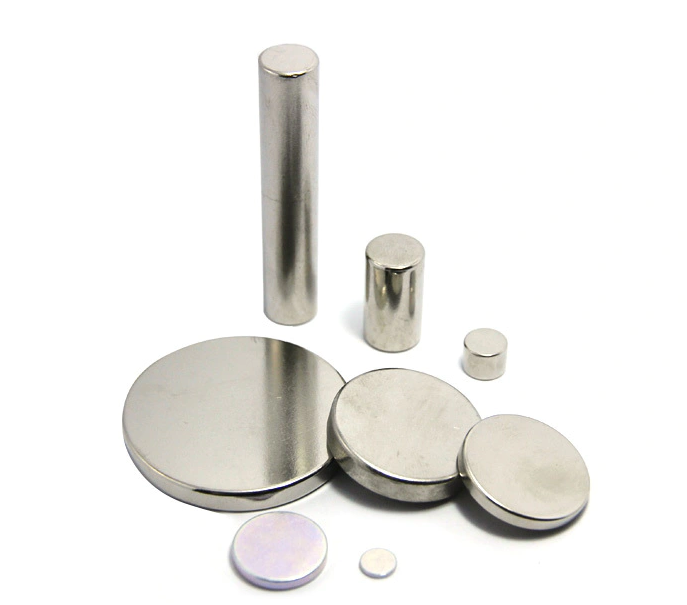
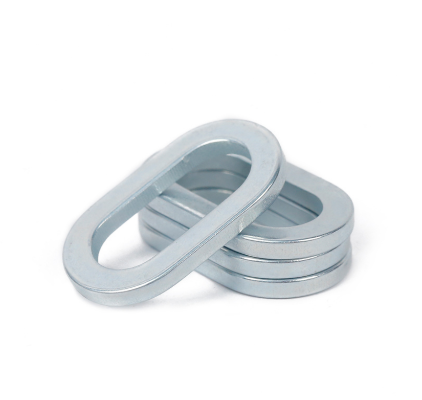
If a magnet attracts iron, can it attract other metals? Our ancestors made many attempts, and found that magnets did not attract either gold, silver, or copper, nor bricks or tiles.
In the Western Han Dynasty, people knew about magnets
It attracts iron, not anything else.
When two magnets are placed close together, they sometimes attract and sometimes repel each other. Magnets are known to have two poles, one N and one S.
Like poles repel each other, opposite poles attract each other. People didn't know this at the time, but they were aware of it.
In the Western Han Dynasty, an alchemist named Luan Da made use of this property to make two chess pieces. By adjusting the positions of the polarities of the two pieces, sometimes they attracted each other, sometimes they repented each other.
Luan da called it "Fighting chess".
He presented the novelty to Emperor Wudi of the Han Dynasty and demonstrated it on the spot.
The Emperor wudi of the Han Dynasty was so surprised and delighted that he appointed Luan as "general of the five Lures".
Luan Dali used magnets to create novel objects to deceive emperor Wu of the Han Dynasty.
The Earth is also a large magnet, with its poles near the geographic South Pole and the geographic North Pole.
Therefore, magnets on the earth's surface, when they can rotate freely, indicate north and South because they repel each other and attract each other.
This was not clear to the ancients, but they were well aware of this phenomenon.
Magnets can be classified as "permanent" and "non-permanent" magnets.Permanent magnets can be natural products, also known as natural magnets, or man-made magnets (the strongest magnets are neodymium magnets).Instead of permanent magnets, which are magnetic only under certain conditions, they are usually produced in the form of electromagnets, which use electric currents to strengthen their magnetic fields.
Soft magnetic includes silicon steel sheet and soft magnetic core;
Hard magnets include al-Ni-Co, samarium cobalt, ferrite and NdFeb. Among them, the most expensive is samarium cobalt magnetic steel, the cheapest is ferrite magnetic steel, the highest performance is NdFeb magnetic steel, but the most stable performance, the best temperature coefficient is al-Ni-Cobalt magnetic steel, users can choose different hard magnetic products according to different needs.
When we talk about magnets, we usually mean permanent magnet magnets.
Sintered samarium cobalt permanent magnet is a superior permanent magnet material, which has high magnetic properties, strong corrosion resistance, oxidation resistance, low temperature coefficient, high Curie temperature, and can be used in higher environments. It is widely used in motors, sensors, detectors, radars and other high-tech fields.
Aluminum-nickel-cobalt is suitable for production with complex shapes.
Light, thin, small products, widely used in instrumentation, communications, magnetoelectric switches and various sensors.
FeCrCo magnet is the transformer of permanent magnet, the most deformable alloy permanent magnet, which can draw wire (0.2-0.3mm), draw tube, roll strip and all kinds of mechanical processing.
A. FECRCO (Ferrochromium cobalt) deformed permanent magnetic alloy has higher magnetic properties, comparable with AlNiCo permanent magnetic alloy, but its Co content is about 50% lower than AlNiCo.
B. Fecrco alloy has excellent plasticity and ductility and is easy to be processed, which is incomparable with casting permanent magnetic alloy. However, the alloy has a relatively high service temperature of about 400, which is also inaccessible to NdFeB rare earth permanent magnetic.
C. FECrCO alloy can be made into wire, rod, pipe, belt and forging materials after machining, such as turning, milling, planing, drilling and stamping, etc., and can be made into all kinds of complex permanent magnet components, especially for small, long and thin components show unique characteristics.
The thinnest strip can be up to 0.05mm, and the thinnest wire can be processed to 0.1mm.
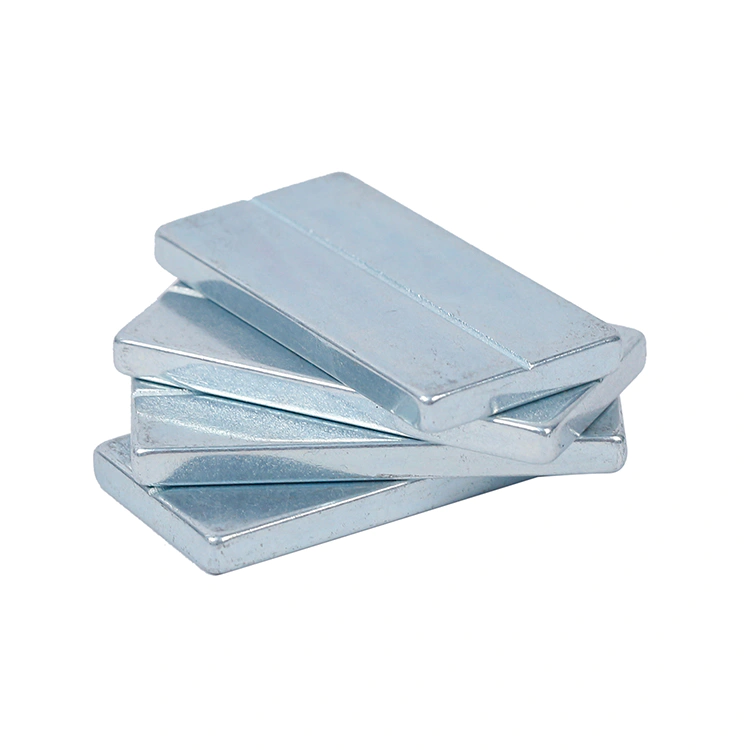
Ferrite permanent Magnetic Material (Ferrite)
It is the most commercially available magnet and is known as the magnetic king. It has a very high magnetic property, its maximum magnetic energy product (BHmax) is 10 times higher than Ferrite.
1. Its own mechanical processing performance is also quite good with operating temperature up to 200 degrees Celsius.
And its texture is hard, performance is stable, have very good cost performance, therefore its application is extremely extensive.
But because its chemical activity is very strong, so must its surface coating treatment.
(e.g. Zn,Ni, electrophoresis, passivation, etc.)
2. Ferrite magnet Its main raw materials include BaFe12O19 and SrFe12O19.
Made by ceramic process, it is a hard and brittle material. Ferrite magnet has become the most widely used permanent magnet because of its good temperature resistance, low price and moderate performance.
3. Aluminum-nickel-cobalt magnets are alloys consisting of aluminum, nickel, cobalt, iron and other trace metal elements.
The casting process can be processed into different sizes and shapes with good machinability.
Cast al - Ni - Co permanent magnets have the lowest reversible temperature coefficient, operating temperature can be up to 600 degrees Celsius.
Al-ni-co permanent magnet products are widely used in various instruments and other applications.
4. SmCo can be divided into SmCo5 and Sm2Co17 according to the composition.
Its development is constrained by the high price of its materials.
As a rare earth permanent magnet, SmCo has high magnetic energy product (14-28MGOe), reliable coerce and good temperature characteristics.
Compared with Ndfeb magnets, samarium cobalt magnets are better suited to work in high temperatures.
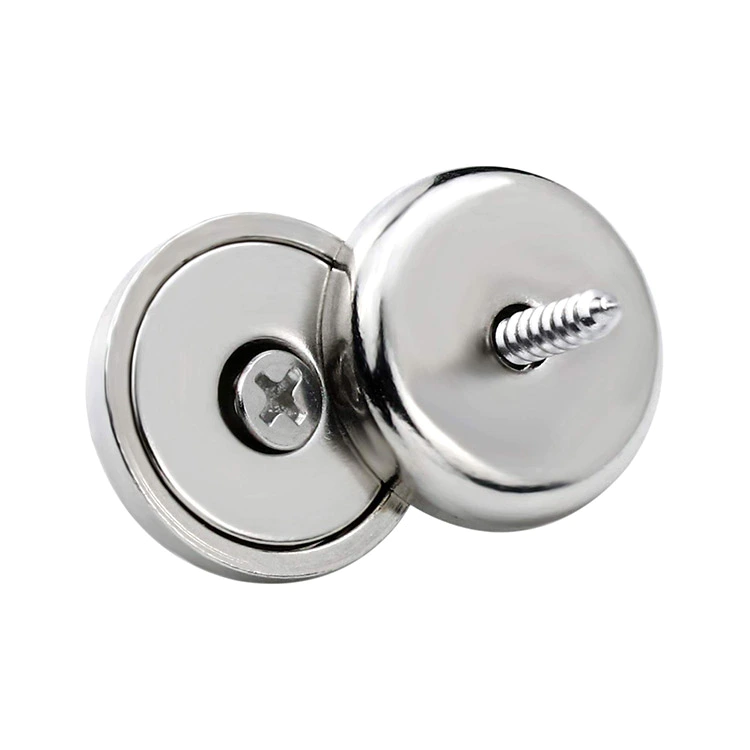
Artificial magnet:
Artificial magnet: divided into shoe magnet and bar magnet, it is the most common life, shoe magnet is more popular.
Single-sided magnets refer to magnets with magnetism on one side and weak magnetism on the other side. The method is to wrap one side of double-sided magnets with special galvanized iron sheet. In this way, the magnetism of the wrapped side will be shielded, and the magnetism will be refracted to the other side, and the magnetism will be enhanced on the other side.
In some cases, only one side is required to be magnetic, and the other side, if magnetic, will cause damage or interference;
Some occasions such as the box on the magnetic only need one side of the magnetic, the other side is dispensable, magnetic is not used, so the use of one side of the magnetic will greatly reduce the cost and save magnetic materials.
The magnetic refraction of a single-side magnet is similar to that of a satellite pot for signal or a flashlight lamp pot for light :
1.Pure sheet iron is prone to magnetic leakage, and the refraction will be enhanced after special treatment. However, the 100% shielding material has not been studied yet, but the effect of the material made by different factories is also different.
2. Angle: According to the refraction principle, arc-shaped materials have the best effect, and the refraction loss of rectangular materials is large.
3. Space: Magnetic field lines in the air, just like cell phone signals, need space to be reflected.
If the flashlight pan is completely wrapped around the bulb, it will not work well because a lot of light refraction is lost.
How to make use of the above principles to get the best effect of magnetic enhancement is the problem of finding the best among many parameters. Many manufacturers are also doing experiments repeatedly. For example, the optimal result of single-side magnetic treatment in Xi 'an Guotai Magnet Factory is 50% enhancement, which will greatly reduce the production cost and save magnetic materials in packaging boxes, boxes and bags and other fields.
Ndfeb magnet also known as a Neodymium magnet, the chemical formula Nd2Fe14B is an artificial permanent magnet, which has by far the strongest magnetic force.
The neodymium magnet was invented by Satoshi Sakagawa et al., sumitomo Special Metals Corporation in 1982. According to its chemical formula, it is mainly composed of neodymium, iron and boron and other chemical elements.
It is possible to replace the traditional pure iron magnet, aluminum-nickel-cobalt alloy and samarium cobalt magnet in many fields such as electric motors, instruments and meters, automobile industry, petrochemical industry and magnetic healthcare products. It can produce all kinds of shapes, such as disk magnet, ring magnet, rectangle magnet, arc magnet and other shapes magnet.
Neodymium magnets, which are powerful magnets, are widely used in electronics such as hard drives, mobile phones and earphones.
Main ingredients
Magnets, also known as magnets, refer to objects or materials that have magnetic fields in their surroundings and within themselves. They are divided into natural and man-made categories.
Artificial magnets are usually made of metal alloys and are highly magnetic.
It can also be divided into "permanent magnet" and "non-permanent magnet", namely "hard magnet" and "soft magnet".
Main components of natural magnet: ferric oxide, chemical formula Fe3O4, often called "magnetic iron oxide".
Magnetic black crystals.
You can view it as a compound of ferrous oxide and iron oxide.
Because there are two different valence ions in the crystal of ferritic oxide, one-third of which are Fe2+ and two-thirds Fe3+, it is a complex compound.
It is insoluble in water and does not react with water.
Reacts with acids, insoluble in bases.
It is mainly used to make primers and topcoats, magnetic materials used in the electronic industry, and anti-rust agents used in the construction industry.

Ferromagnetism refers to the magnetic state of a material with spontaneous magnetization.
In each material iron is the most well-known, hence the name.
After some materials are magnetized under the action of external magnetic field, even if the external magnetic field disappears, they can still maintain their magnetized state and have magnetism, that is, the so-called spontaneous magnetization phenomenon.
All permanent magnets are ferromagnetic or ferromagnetic.
Basically the concept of ferromagnetism involves anything that shows magnetism in the absence of an external magnetic field.
The concept is still used in this way.
But through a deeper understanding of different display magnetic materials and their magnetism, scholars have defined the concept more precisely.
A substance is called ferromagnetism when all the magnetic ions in its protocell point in the direction of its magnetism.
If only part of the ion's magnetic field points to its magnetic direction, it is called ferromagnetism.
Antiferromagnetism is called antiferromagnetism if the magnetic ions point in exactly the opposite direction from each other (although all magnetic ions point in exactly opposite directions).
There is a critical temperature at which magnetic phenomena occur.
For ferromagnetic and ferromagnetic materials, this temperature is called the Curie temperature;
For antiferromagnetic materials, this temperature is referred to as niel temperature.
We have mentioned some magnetic materials when talking about magnetic sources, electromagnetic induction and magnetic devices
In fact, magnetic materials have been widely used in various aspects of traditional industries.
For example, without magnetic materials, electrification would be impossible, because electricity is generated by generators, transmission by transformers, electrical machinery by motors, telephones, radios and televisions by speakers.
Magnetic steel coil structure is used in many instruments.
All of this has been said in the context of other things.
Magnets for medical applications
Homing pigeon lovers know that if they are released hundreds of kilometers away, pigeons will automatically return home.
Why do pigeons have such good sense?
Pigeons, it turns out, are sensitive to the earth's magnetic field and can use changes in the field to find their homes.
If a magnet is attached to the pigeon's head, the bird will get lost.
If pigeons fly over radio towers, powerful electromagnetic interference can also disorient them.
In medicine, the use of nuclear magnetic resonance can be used to diagnose abnormal tissue in the body, to determine disease. This is the familiar nuclear magnetic resonance imaging technology, the basic principle is as follows: the nucleus has a positive charge, and spin motion.
Normally, the arrangement of nuclear spin axes is irregular, but when placed in an external magnetic field, the nuclear spin spatial orientation transitions from disorder to order.
The magnetization vector of the spin system increases gradually from zero, and when the system reaches equilibrium, the magnetization reaches a stable value.
If the nuclear spin system is subjected to external action, such as radiofrequency excitation of the nucleus at a certain frequency, resonance effects can occur.
After the radio frequency pulse stops, the activated nucleus of the spin system, unable to maintain this state, will return to the original arrangement state in the magnetic field, and at the same time, release weak energy, which becomes the radio signal. Many of these signals are detected and made to carry out spatial resolution, so as to obtain the distribution image of the nucleus in motion.
The characteristic of NMR is that flowing liquids do not produce signals known as flow effect or flow blank effect.
So the blood vessels are gray - white tubes, and the blood is black with no signal.
This allows the blood vessels to separate easily from the soft tissue.
Surrounded by cerebrospinal fluid (CSF), which is black and has a white dura set off by fat, the spinal cord shows a strong signal structure of white.
Mri has been used in imaging diagnosis of all systems of the whole body.
The best effect is the brain, and its spinal cord, heart large vessels, articular bone, soft tissue and pelvic cavity.
For cardiovascular disease can not only observe the anatomical changes in the chamber, large blood vessels and valve, and can make ventricular analysis, qualitative and semi-quantitative diagnosis, can make multiple sectional drawing, high spatial resolution, a heart and lesions, and its relationship with surrounding structures, superior to other X-ray imaging and two-dimensional echocardiography and nuclide and CT examination.
Magnetism can not only diagnose, but also help treat diseases.
Lodestone is a crude drug of ancient Chinese medicine.
People use magnetic differences in different components of blood to separate red and white blood cells.
In addition, magnetic field and human body meridian interaction can achieve magnetic therapy, in the treatment of a variety of diseases has a unique role, there have been magnetic therapy pillow, belt and other applications.
The iron remover made by magnet can remove the possible iron dust in flour, magnetized water can prevent the scale of boiler, and magnetized seeds can increase crop production to a certain extent.
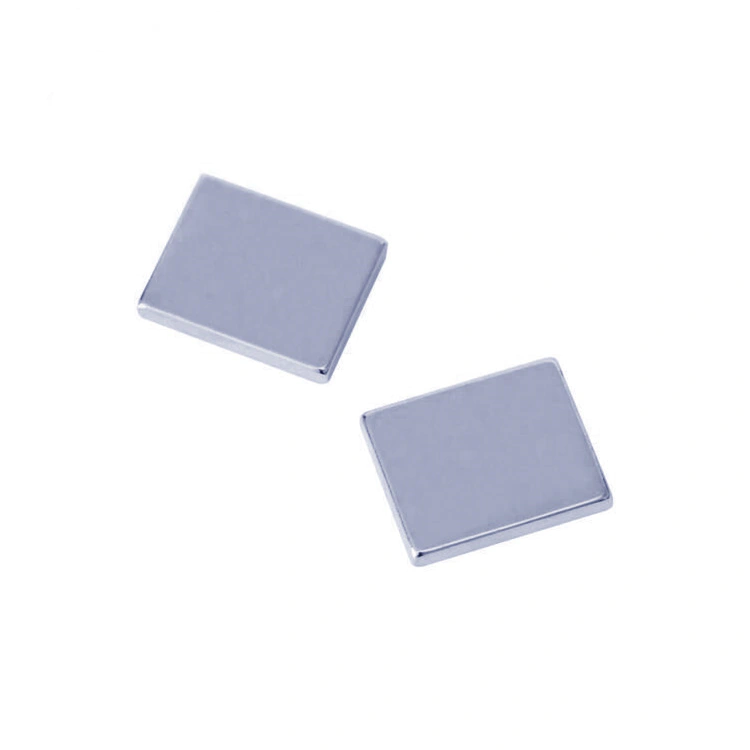
Magnetic applications in astronomy and other fields
We already know that the Earth is a giant magnet. What does it have to do with geology?
What about the magnetic field in the universe?
At least in pictures, we've all seen the brilliant northern lights.
Northern lights have been recorded in ancient China.
The northern lights are actually the result of an interaction between particles in the solar wind and the earth's magnetic field.
The solar wind is a stream of energetic charged particles emitted by the sun.
When they reach the Earth, they interact with the geomagnetic field, much as wires with electric currents are forced in the magnetic field, causing the particles to move and gather north and south and collide with the thin gas high above the earth. As a result, the gas molecules are excited and thus glow.
Sunspots are areas of the sun where magnetic activity is extremely high.
Sunspot eruptions can have effects on our lives, such as temporarily disabling radio communications.
Therefore, studying sunspots is of great significance to us.
Geomagnetic changes can be used to explore for deposits.
Since all materials have strong or weak magnetism, if they gather together to form a deposit, they must interfere with the geomagnetic field in the nearby area, resulting in abnormal geomagnetic field.
According to this point, the magnetic properties of the earth can be measured on land, sea or air to obtain geomagnetic maps, and unknown mineral deposits or special geological structures can often be found through the analysis and further exploration of areas with abnormal magnetic fields on the geomagnetic maps.
Rocks of different geological ages tend to have different magnetic properties.
Therefore, the magnetic properties of rocks can be used to help determine the geological age changes and crustal changes.
Many mineral resources are symbiotic, meaning that several minerals are mixed together and have different magnetic properties.
Use this characteristic, people developed magnetic separation machine, use the difference of different composition mineral magnetism and magnetic strength, attract these material with magnet, so the attraction that they get differs somewhat, the result can mix together different magnetic mineral separation, realized magnetic separation.

Magnetic applications in the military
Magnetic materials are also widely used in military applications.
For example, ordinary mines or mines can only explode on contact with a target and are therefore of limited use.
And if you put magnetic sensors on mines or mines, because tanks and warships are made of steel, they can detect changes in the magnetic field that cause mines or mines to explode as they approach (without having to touch the target), making them more lethal.
In modern war, air superiority is one of the keys to victory.
However, the aircraft is easy to be detected by enemy radar during flight, so it is more dangerous.
To avoid enemy radar monitoring, can be in the plane surface coating a layer of special magnetic material - absorbing material, it can absorb the launch of the electromagnetic wave radar, the radar electromagnetic wave touches the plane after only a few of the electromagnetic wave reflection occurs, so the enemy radar cannot detect radar echo, can not find the plane, it is to achieve the purpose of the stealth aircraft.
This is known as the "stealth plane."
Stealth technology is a hot topic in the field of military research in the world.
The US F-117 stealth fighter is an example of a successful stealth fighter.
In the United States "Star Wars" program, there is a new weapon "electromagnetic weapon" development and research.
Conventional artillery USES the thrust generated by the instantaneous expansion of ammunition to accelerate the projectile and push it out of the barrel.
The electromagnetic gun, on the other hand, puts the shell in the solenoid and energizes the solenoid. Then the magnetic field generated by the solenoid will exert a huge force on the shell and shoot the shell.
This is called an electromagnetic gun.
Similarly also has the electromagnetic missile and so on.

Maglev train applications:
Maglev is a high-speed maglev train with contactless electromagnetic levitation, guidance and drive systems and maglev train.The car system.Its speed can reach more than 500 kilometers, it is the world's fastest ground passenger transportation vehicle, it has the advantages of fast speed, strong climbing ability, low energy consumption, low noise, safety and comfort, no fuel, less pollution, cheap price and so on.
And it is elevated and occupies little arable land.Maglev trains mean that these trains use magnetic fundamentals to float on rails instead of old steel wheels and track trains.
Maglev technology USES electromagnetic force to lift the entire train car and can fly with no contact and no fuel without annoying friction and unpleasant telephony.The maglev is the most fundamental breakthrough in railway technology since the introduction of Stephenson's Rocket steam locomotive about 200 years ago.
The maglev train, which may seem new today, has a long history of theoretical preparation.The research on maglev technology originated in Germany. As early as 1922, German engineer Hermann Kemper proposed the principle of electromagnetic levitation and applied for the patent of maglev train in 1934.
Since the 1970s, with the continuous strengthening of the economic strength of industrialized countries in the world, Germany, Japan, the United States, Canada, France, the United Kingdom and other developed countries have begun to plan the development of maglev transportation system in order to improve the transportation capacity to meet the needs of economic development.
There is one in Shanghai, China, and it is the only maglev train line in China!
This article is contributed by Zhongke Magnetic Industry Co.,Ltd., one of professional magnetic product manufacturers in China, more info about magnets, stay tuned.

